-Trending Prospects (12/9) - Doug McDermott, Scott Machado, Henry Sims
-Trending Prospects (12/22) - Kris Joseph, Draymond Green, Chace Stanback
-Trending Prospects (12/23) - Will Barton, LeBryan Nash and Ricardo Ratliffe
-Trending Prospects (12/30) - Mike Moser, Kenny Boynton and Jarrod Jones
Herb Pope, 6'8, Senior, PF/C, Seton Hall
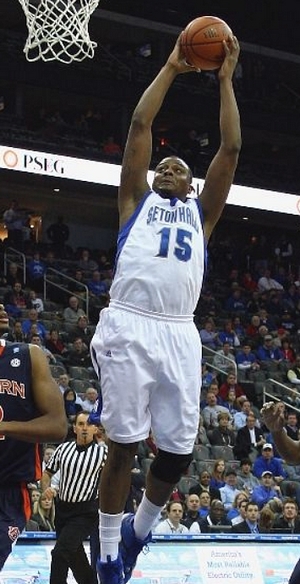
Derek Bodner
After a disappointing junior season, both individually and as a team, senior big man Herb Pope is looking for a bounce back season with the Pirates, and so far the early returns have been positive. Pope's scoring, rebounding, and efficiency all took severe drops as a junior on a 13-18 Seton Hall team which struggled under first year coach Kevin Willard.
Pope, who had declared for the 2010 NBA draft after his sophomore season but did not hire an agent, collapsed during a workout, having to be rushed to the hospital, where he would stay for three weeks. As more and more details about the collapse, the severity of his heart condition, and the physical and mental hurdles it placed upon Pope have become public, it became evident how much of an impact the incident had on his struggles last year. In fact, Pope appears lucky to be alive right now, let alone a contender for Big East player of the year.
The setback now appears to be in Pope's rear-view mirror. The senior forward has led Seton Hall to a 13-2 record, including recent impressive wins over West Virginia and 8th ranked Connecticut. Individually, Pope is having by far the best season of his collegiate career, scoring 23.9 points per 40 minutes pace adjusted (5th amongst the top 100 prospects in our database), grabbing 14.0 rebounds per 40 pace adjusted (6th), while doing so at a very efficient 57% true shooting percentage.
Rebounding is still Pope's strongest asset, a statement that has been true his entire career. His 14 rebounds per-40 minutes pace adjusted rank in the top 10 amongst prospects in our database, being an effective rebounder on both the offensive and defensive sides of the ball. Pope shows a good nose for the ball off the glass, which combined with a very high energy level, excellent hands, willingness to fight for position, and good technique, forms the basis of his value at the next level, and one that has a good probability of translating as well.
From there, Pope has a diverse range of skills at the collegiate level, although which of those skills will translate, and to what extent, is still somewhat of a question. His post game has shown marked improvement from a year ago, both in his comfort level and footwork. Pope has more advanced moves in his repertoire now than in years past, with a variety of spins, drop steps, and the ability to make hook shots over either shoulder. His average explosiveness and difficulties scoring over length make it questionable exactly to what extent this will translate to the next level, but he does appear to have good instincts as a scorer.
Pope is tenacious on the offensive glass, using his lower body strength and high effort level to grab an impressive 4.6 offensive rebounds per-40 minutes, pace adjusted. He gathers himself quickly and does a good job of not bringing the ball down, getting his shot off before defenders have a chance to gather themselves and before guards have had a chance to strip the ball.
He also does a good job of moving without the ball, making strong cuts and has excellent hands. He has good touch around the hoop and the ability to finish with either hand, although this is another area where his lack of vertical explosion dampens his effectiveness somewhat.
The key in his development is likely his ability as a jump shooter. Pope struggled last year, shooting only 22.2% on a limited amount of jump shots, and his 0.537 points per possession ranked in the bottom 11%, according to Synergy Sports Technology.
So far this year that part of his game has been much improved. He is shooting a much more respectable 42.4% on jump shots this year, yielding 1.03 points per possession. His consistency still appears to be an issue, and his shot tends to be somewhat flat, especially as he gets further from the hoop, which may play a part in this inconsistency. However, if he can continue to show that his improved jump shot will hold up throughout the year and is a weapon going forward, projecting an offensive role for him at the next level becomes a much easier proposition.
A consistent jump shot would also help him establish himself as a face-up threat. While not an explosive athlete, Pope is fairly fluid for a player of his size, has greatly improved his off hand, and has an effective right-to-left spin move that helps him gain separation on drives.
On the defensive side of the ball, Pope's bulk -- and willingness to use it -- help make him a solid defender in the post. He shows decent technique on the perimeter, both in defending isolation plays and on the pick and roll, but his average lateral foot speed could become an issue at the next level guarding quicker power forwards.
Perhaps the biggest improvement in his game on the defensive end has been his ability to stay on the court. Pope spent his summer working with John Lucas, and looks to be in significantly better shape, having overcome much of the physical side effects from his collapse. Pope still carries a little bit of extra weight but looks much improved from his junior season, where conditioning was clearly an issue. This has helped him stay out of foul trouble, dropping from 5.2 fouls per-40 minutes to a much more manageable 3.3.
Herb Pope still has some question marks and red flags surrounding his background, but his play, and perhaps more importantly his improved conditioning, are good signs going forward. He appears to have dedicated himself in the offseason, and the results have followed. Pope, despite being somewhat undersized, has an NBA caliber body, a skill in rebounding that should translate, and a level of mobility and overall skill level that provides some intrigue. If Pope can prove his improvement as a jump shooter is legitimate, it would not be a surprise to see him stick at the next level.
Eric Griffin, 6'9, Senior, Power Forward, Campbell
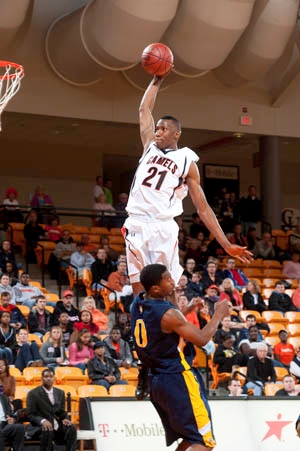
Matt Williams
A relative unknown coming into this season after a solid, but unspectacular junior campaign for the Campbell Camels in the Big South, Eric Griffin garnered some internet buzz thanks to this viral video of his dunks against North Carolina A&T:
#21 Eric Griffin, Campbell Camels
While his play above the rim brought him some initial interest, Griffin has earned the attention of NBA scouts through the extremely productive season he's having thus far. Clearly he is more than just a YouTube sensation, posting gaudy efficiency numbers and ranking as one of the more interesting mid-major prospects in the nation.
It is not entirely surprising that Griffin didn't emerge on the draft radar earlier in his career, considering his level of experience. Failing to make his Orlando high school team until his senior year, Griffin is a classic late bloomer who spent two seasons at the junior college level before arriving at Campbell in the fall of 2010, making this just his fifth year of organized basketball.
A long, lanky four man, Griffin bares a striking resemblance to 2010 draftee and current Jazz power forward Jeremy Evans from a physical standpoint. He has decent height for his position, but plays bigger thanks to his exceptional wingspan and the quickness in which he gets off his feet. An explosive leaper who runs the floor like a guard, Griffin is simply an outstanding athlete. He'll need to add considerable bulk to his extremely lanky frame if he's to hold his own against opposing big men at the professional level, though, which may be his biggest question mark moving forward.
Though Griffin's athleticism certainly piques the interest of scouts at first glance, his efficiency on the offensive end this season has been perhaps just as impressive. Spending a significant amount of time spotting up on the perimeter as a junior, Griffin has done the majority of his work in the paint as a senior. Establishing a low base and managing to get solid position on the block against stronger opponents, Griffin's teammates do a terrific job finding him in the post. Showing a strong work ethic and presenting a big target thanks to his long wingspan, Griffin does a nice job putting himself in scoring position against the lower level competition he faces.
When Griffin receives the ball on the block, he shows a basic, but promising post-game that includes a baby hook, turnaround jump, and even an occasional counter move or face-up drive. After connecting on 40% of his post-up field goal attempts as a junior, Griffin is finishing nearly 55% of his back to the basket shots so far this season according to Synergy Sports Technology.
Showing improved decisiveness and touch, Griffin can score over smaller defenders and use his quickness against stronger ones. His efficiency wavers at times when he doesn't make a quick move and is walled off by a bigger defender, and he remains fairly unpolished in terms of what moves he's using to score.
Away from the post, Griffin shows the same raw versatility that helps him impact the game offensively in the paint. Whether he's putting the ball on the floor and beating his man to the rim in an isolation situation, pushing the ball up the floor on the fast-break himself, or knocking down a jump shot after putting his defender on his heels with a jab, Griffin has some intriguing raw tools to work with on the perimeter.
His 65% shooting from the foul line and 6-17 shooting from beyond the arc are indicative of his jump shooting inconsistency at this point, but he has a high release point and seems to have some potential in this area considering how comfortable he looks knocking down shots in rhythm from time to time.
As a ball-handler, Griffin is not terribly polished, but shows a quick first step and can use his dribble to get to the basket when he is working out on the perimeter. He's still learning how to use his speed in half-court situations to slash to the rim, but his comfort level putting the ball on the deck has come a long way since his junior season, even if it is still only starting to develop.
Griffin has room for growth in a number of areas and could develop into a number of roles, but is a long ways away from being consistent in any one area at this point. His best tool as a NBA prospect right now is his ability to finish at the rim. Converting 80% of his shots around the basket according to Synergy, Griffin's explosive leaping ability makes him a threat to dunk over defenders in highlight reel fashion when he receives the ball cutting to the rim, running the floor in transition, or pulling down an offensive board. Though Griffin is only an above average rebounder on the offensive end, his explosiveness and ability to use fakes make him a tremendously efficient scorer in the paint at the level of competition he plays at.
Defensively, Griffin's main value is as a shot blocker. He's quick to rotate from the weakside and uses his explosiveness and length to deny would-be scorers emphatically. His lack of strength limits him to some degree on the NCAA level in the post and as a rebounder, and though he has the quickness to hedge the pick and roll as a pro and is a difficult matchup for face-up fours or big men who step away from the rim, his ability to pack weight on his frame will dictate his ability to capably defend the block one-on-one at the next level a crucial sticking point in his development as a prospect.
As with all small school prospects, Griffin's level of competition will be criticized, and although he has produced at identical levels against the three BCS teams Campbell has played, he'll still have some questions to answer down the road regard his role at the next level, the position he'll be able to defend, and his ability to transition to playing top-flight competition on a nightly basis.
Despite all that, there is no questioning the upside Griffin possesses as a pro prospect with his physical attributes and budding skills, and as the season progresses, it is worth watching how far he can propel the Camels.
Considering the point he's at in his development, it would not be at all surprising to see Griffin convince a NBA team to take a flier on his potential at some point, be it this June or later in his career.
In the meantime, if he can help his team reach the NCAA Tournament for the second time in school history, and alleviate concerns about his frame in NBA workouts and the Portsmouth Invitational Tournament, he could help his cause considerably.
Otto Porter, 6'9, Small Forward, Freshman, Georgetown
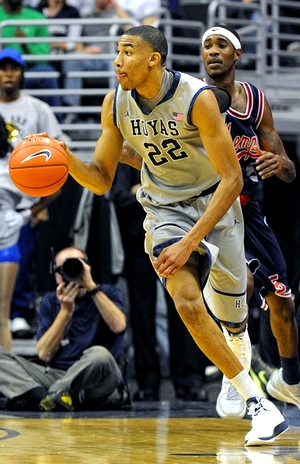
Kyle Nelson
Georgetown has vastly exceeded expectations thus far this season with a stellar 12-1 record and a top-10 national ranking. While upperclassmen Hollis Thompson, Henry Sims and Jason Clark are playing very well, freshman Otto Porter has emerged from relative obscurity as an essential component to this success on both ends of the floor. Having never played AAU basketball and coming from a very small town in Missouri, Porter was not highly recruited, but his recent success has landed him on scouts' radars as a prospect to watch.
At 6'9 with a very long wingspan and a rail-thin 205-pound frame, Porter has excellent size for the small forward position, even if he must get significantly stronger before he can make an impact at the next level. This is especially important considering his lack of elite athleticism, as he is more fluid and smooth than quick or explosive. Though his intelligence and instincts allow him to compensate somewhat at this level, he will have to maximize his physical potential to contribute at the next level.
Despite playing 27.7 minutes per game and possessing an intriguing skill set relative to his size and age, Porter is not a big scorer at this stage, averaging just 8.5 points per game on 6.4 field goal attempts, ranking sixth on Georgetown's roster in usage rate.
Part of this has to do with his perimeter shooting woes, an area in which he desperately needs to improve. While fairly effective making shots in the mid-range area (primarily from 12-15 feet), Porter shoots just 18.5% from beyond the arc on two attempts per game. His mechanics are very deliberate and his release is inconsistent at best, ranging from a compressed shooting motion to a lack of follow through. Getting stronger may help him develop greater range on his shot, but considering how awkward his mechanics are, there's a possibility that he may have to completely overhaul his stroke at some stage to become an acceptable long-range shooter.
Where Porter excels at the moment is doing the little things inside the arc. He converts an astounding 69% of his 2-point attempts (3rd best in our database), moving off the ball extremely well in Georgetown's half-court offense, and finding spaces to catch the ball and finish around the basket or with a mid-range jumper. He's a prolific offensive rebounder, utilizing his excellent length, savvy and aggressiveness to come up with plenty of loose balls. He is also an extremely unselfish player who facilitates ball movement with his passing all over the floor.
Porter must continue to develop his ball-handling skills to make the full conversion to the small forward position. Right now he is primarily a straight-line dribbler, struggling when forced to change directions with the ball. He has not shown the ability to create his own shot on a consistent basis yet, partially due to Georgetown's system, partially due to his somewhat passive style, and partially due to his rudimentary ball-handling skills. It will be interesting to see how he develops in this area, particularly since he is not a prolific shooter.
Defensively, Porter lacks the strength to guard post players and the lateral quickness to guard small forwards, but he is able to compensate somewhat due to his length and his awareness. He would be well served to improve his defensive stance, as his propensity to stand completely upright certainly contributes to his struggles defending the perimeter. That being said, Porter is already establishing himself as an intelligent and aggressive defender, never giving up after getting beaten and remaining a factor even while trailing his man. He must continue to maximize his physical potential because he shows intriguing abilities despite his lack of elite athleticism.
Though Porter is a very raw and unconventional basketball player at this point, all indications suggest that he is an intelligent individual with a good work ethic. As he continues to mature physically, it will be interesting to see how his skill-set evolves, as he's clearly still an early stage of his learning curve. Being one of the youngest members of this freshman class, not turning 19 for another six months, time is clearly on his side.
Quincy Acy, 6-7, Power Forward, Senior, Baylor
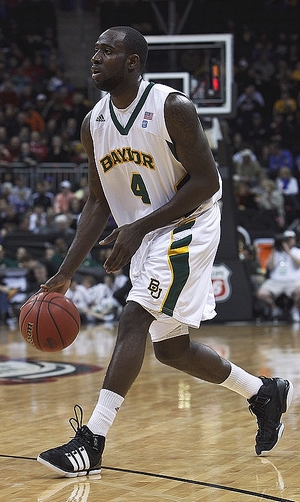
Joe Treutlein
After a breakout junior season, Quincy Acy is continuing his strong play as a senior, making some subtle improvements to his game, being a key player on Baylor's #4 ranked squad, and continuing to be a regular fixture on Sportscenter highlight reels.
The first thing to notice about Acy is he's finally gotten around to filling out his frame some, adding some lean mass to get thicker in the upper body without sacrificing any athleticism for it. He's still undersized by power forward standards and probably isn't capable of adding much more bulk without negative side effects, but this should help him finishing through contact projecting to the next level, and certainly will be useful if he figures out how to apply it on the defensive end.
On the offensive end, Acy has shown some minor strides with a few of his skills, looking more comfortable in most areas and continuing to round out his game. He's seeing even more touches playing with his back to the basket this season after a big increase last year, and does a very good job finishing against college competition in these situations. He shows very good touch around the basket and settles for mostly high-percentage shots, while also having an explosive drop-step in his arsenal to take advantage of his physical tools.
Acy's finesse post game is not nearly as refined, as his right-handed hook shot is pretty weak when he isn't right near the basket, and the problems still remain about his post-game in general likely not translating well to the next level due to his lack of size. Still, his continued improvement here can't hurt him, and he could make use of this game at times in smaller lineups, at least to keep defenses honest.
The more intriguing developments in Acy's game are on the perimeter, where he's still a very raw player and a ways away from making consistent NBA-level contributions, but there are some interesting flashes to take note of. Acy's free-throw percentage is up slightly once again, from 68.5% to 74.7%, and he's also hit two of three three-point attempts on the season, the first makes of his career.
Acy's jump shooting form looks significantly improved from last season, mainly in that he's doing a much better job getting his feet under him and staying balanced, looking pretty comfortable on the two open threes he did knock down. He also looks decent on his few spot-up mid-range attempts, and has the makings of a solid pick-and-pop threat in time.
Acy is obviously still very early in his development in this aspect of his game, but given he just turned 21 three months ago and has shown a pronounced learning curve in his time in college, this is certainly something NBA teams will be aware of and will likely test in pre-draft workouts. How Acy continues to improve in this area in his pre-draft training could be very helpful to his stock, and at the least could help him get into the league in the future if he continues improving.
While Acy's improved post game is helping him at the college level and his developing jumper could help him in the NBA down the road, the key aspect of his game from an NBA perspective remains his ability to finish off the ball around the basket, where his athletic tools and awesome length make him a very dangerous threat.
This hasn't changed, as he's still a very potent finisher on cuts and offensive rebounds, which should translate well to the NBA in the right situation. There's also some potential for Acy to contribute more consistently in this regard, as he isn't frequently used on pick-and-rolls or in transition opportunities, two areas where he could see more touches, not unlikely given the stylistic tendencies of the NBA.
On the defensive end, Acy's development remains fairly unimpressive, as he just doesn't show the same consistent energy level and is still lagging from a fundamentals standpoint. Acy's improved strength is helping him some in the post, and his excellent length is useful in contesting shots, but he shows little concept of leverage and is often backed down and/or shot over by the opposition with relative ease.
His perimeter defense is even less impressive, as he doesn't have the discipline to stay down in his stance and often looks very uncomfortable against pick-and-rolls, not being very effective in this regard. His rebounding is up slightly on a 40-minute basis, but he's still just an average rebounder overall, and will likely need to improve there to find a long-term spot in the league.
Considering that any role he plays in the NBA will likely revolve heavily around rebounding and defending, his shortcomings in this area, and more importantly the lack of intensity he displays, will certainly not work in his favor.
Looking forward, Acy obviously has some intriguing tools from an NBA perspective, but is obviously at a disadvantage given his size and still developing skills on both ends of the floor. Acy's improvements in the past two seasons are definitely very helpful to his cause, but he could help himself most in the short term by really applying himself better on defense and the glass, two areas he can make strides rather quickly if he applies himself more diligently.













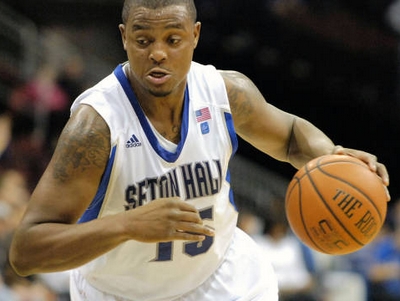






















Comments